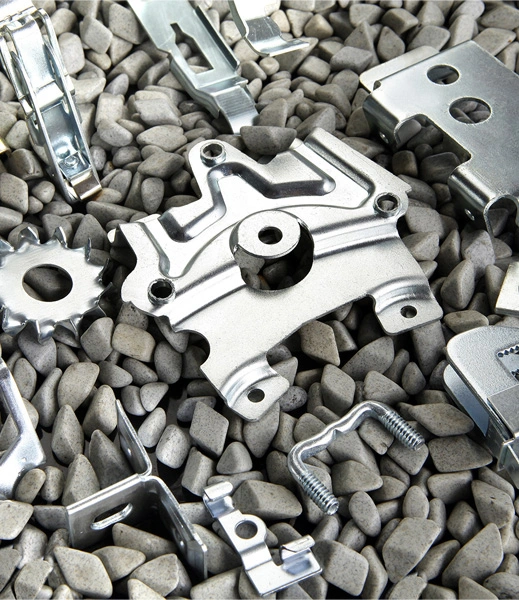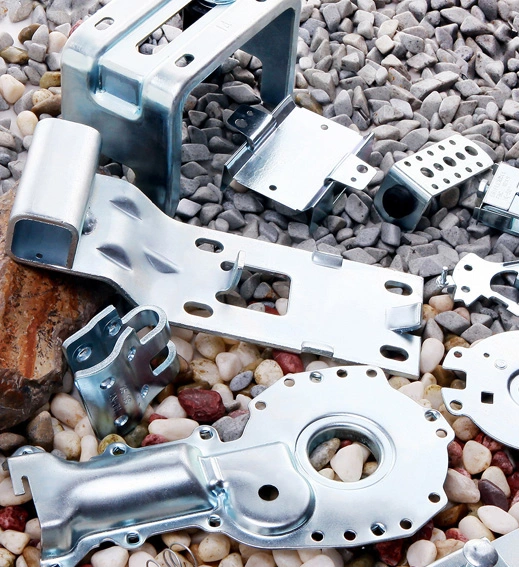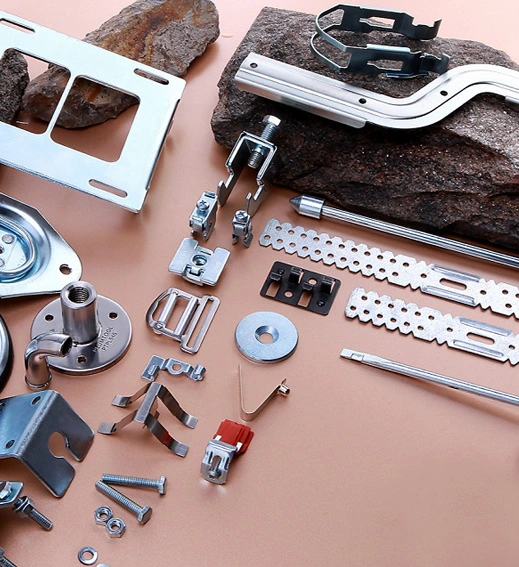

Material: brass /carbon steel /stainless steel /aluminum /copper /galvanized sheet available
Thickness: 0.6mm
Tolerance: ±0.1mm
Manufacturing process: progressive die stamping
Surface treatment: powder coating /painting /anodization /sandblasting /zinc coating etc available
Lamp head hardware contact piece, conductive positive and negative electrode spring piece
There are many types of stamping molds, which can be classified according to the following rules
1. Classification by stamping process
(1) The blanking process uses a punching die, which includes a cutting die, a hole punching die, a notched die, a trimming die, a parting die, a trimming die, and a precision punching die.
(2) The bending process uses a bending die, which includes bending dies, pulling dies, twisting dies, curling dies, etc.
(3) The deep drawing process uses a drawing die, which includes single-sided drawing dies, double action drawing dies, and thinning drawing dies.
(4) The forming process uses forming molds, including undulating forming molds, flanging molds, shaping molds, bulging molds, necking molds, etc.
(5) The volume stamping process includes coining die and cold extrusion dies.
2. Classification by process combination
(1) Single process die: a die that completes only one process in one stroke of the press.
(2) Continuous mold: Continuous mold, also known as progressive mold. It is a continuous stamping mold. In the workpiece part of the mold, it is divided into several equidistant workstations. After the strip is continuously stamped along the workstation, various different processes of stamping are completed. At the final process, a qualified part or semi-finished product can be punched out.
(3) Composite mold: Composite mold is a punching die that uses one stroke of a press to complete two or more processes at the same position of the mold.
3. Classified by mold orientation form
(1) Open die: an unguided punching die.
(2) Guide pillar mold: The upper and lower molds of the mold are guided by guide pillars and guide sleeves.
(3) Guide plate die: a punching die that uses guide plates for guidance.
4. Classification by degree of automation during mold stamping
It can be divided into manually operated dies, semi-automatic dies, and automatic dies.
5. Classification by production adaptability
Stamping dies can be divided into two types based on factors such as production batch size: universal dies and specialized dies.
6. Classification by mold material
It can be divided into metal stamping dies, rubber stamping dies, plastic stamping dies, and powder metallurgy stamping dies.



